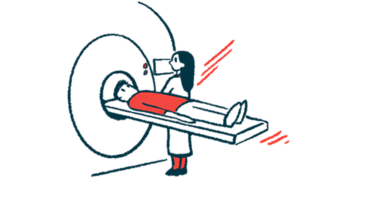Limb Spasm Treatments for MS Patients Explored by Flex Pharma and Ipsen Biopharmaceuticals

 Upper limb spasticity and lower leg cramps and spasms, two conditions that affect patients with multiple sclerosis, are being treated in separate clinical trials with results from both showing positive benefits. Dysport (abobotulinumtoxinA), from Ipsen Biopharmaceuticals, Inc., and transient receptor potential (TRP) activators, from Flex Pharma, are proving to be effective in alleviating patients’ symptoms in novel ways.
Upper limb spasticity and lower leg cramps and spasms, two conditions that affect patients with multiple sclerosis, are being treated in separate clinical trials with results from both showing positive benefits. Dysport (abobotulinumtoxinA), from Ipsen Biopharmaceuticals, Inc., and transient receptor potential (TRP) activators, from Flex Pharma, are proving to be effective in alleviating patients’ symptoms in novel ways.
“To our knowledge, no marketed products have been shown to be safe and effective in treating leg cramps in well-designed, blinded human clinical studies, said Rod MacKinnon, MD, Co-Founder of Flex Pharma, in a news release from the company. “These study results support the belief that our proprietary treatment has significant potential as a solution for people suffering from muscle cramping and spasms resulting from a broad range of neuromuscular disorders, including nocturnal leg cramps, multiple sclerosis, spinal spasticity, and cervical dystonia.”
A representative from Flex Pharma presented data during the Cell Symposium on Translational Neuroscience that demonstrated efficacy for preventing muscle cramps, the study’s primary endpoint. Study participants experienced significantly fewer electrically-induced muscle cramps when taking the TRP activators, and the effect lasted for six to eight hours. Cramp intensity was reduced three-fold compared to cramps experienced by participants receiving a control treatment.
[adrotate group=”4″]
“With these positive results in healthy normal volunteers, we plan to initiate at least one proof-of-concept efficacy study in patients with nocturnal leg cramps in the second quarter of 2015,” said Christoph Westphal, MD, PhD, Chairman and Chief Executive Officer of Flex Pharma. “Nocturnal leg cramps can cause distress, interrupted sleep, reduced quality of life, and interference with activities of daily living.”
Moving on to upper limb spasticity, representatives will present five posters at the Annual Assembly of the Academy of Physical Medicine and Rehabilitation (AAPM&R) concerning the use of Dysport during clinical trials for cervical dystonia, a condition of neck muscle contractions and spasms. “We are very encouraged by this new research, confirming the use of Dysport as an effective treatment option for cervical dystonia, while continuing to pursue its potential use in other investigational indications, including upper limb spasticity,” said Cynthia Schwalm, Chief Executive Officer of Ipsen Biopharmaceuticals, in a news release.
When used to treat upper limb spasticity in a phase 3 study, Dysport was shown to be safe for treated patients, with no reported safety events. Muscle tone, spasticity, and active range of motion in spastic upper limbs were improved after four weeks of treatment with 500 or 1,000 IU of Dysport.
Outside of the United States, Dysport is approved to treat upper limb spasticity. However, in the United States, it is approved only for treating adults with cervical dystonia. Ipsen’s supplemental Biologics License Application for Dysport to treat upper limb spasticity in adults has been accepted by the FDA.
Although both TRP activators and Dysport are in the clinical trial stages of development, they may be future treatments for muscle spasms in the upper and lower extremities, giving relief to multiple sclerosis patients afflicted by these symptoms.






